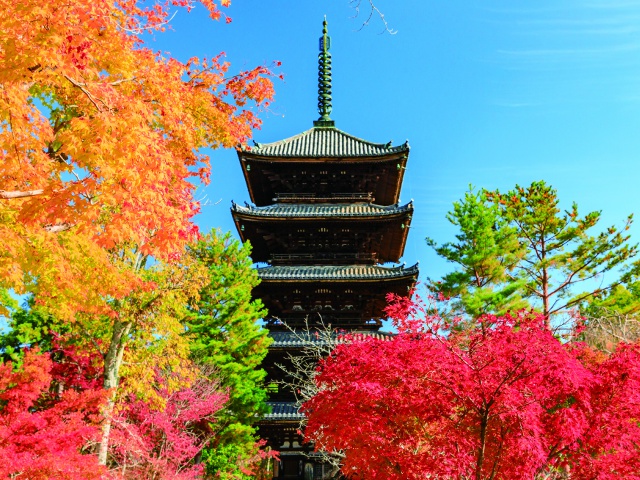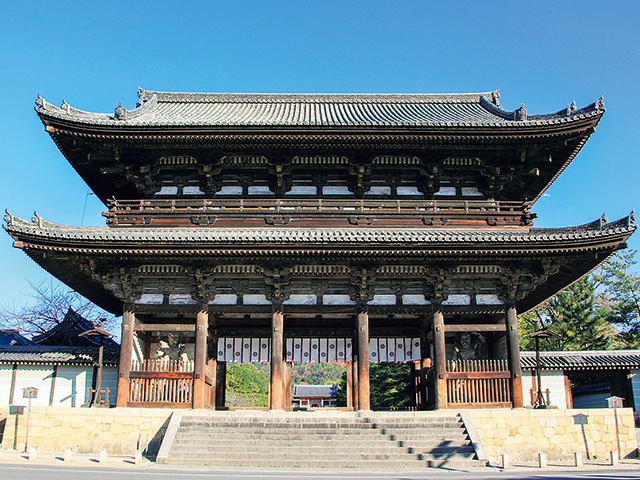
A five-story pagoda from the Edo period stands
A temple founded in Ninna 4 (888). The grounds are lined with historic buildings built during the Edoperiod. The Omuro cherry blossoms in spring are also a must-see.
Various experiences are offered to bring Buddhism closer to the people. Visitors can view precious Buddhist statues through VR images. Experience the mystical world of Buddhism by experiencing sutra copying at dusk and “komori,” the ritual of heaping incense.

Ninnaji Temple
075-461-1155
33 Omuroouchi, Ukyo-ku, Kyoto-shi
Near Omuro-Ninnaji City Bus Stop
9am-5pm
Ninnaji Imperial Garden: ¥800 (See official website for other fees)
*Free admission for high school students and younger to support cultural education for the next generation
Parking: 100 cars (500yen per visit)
*Please check the reservation form for specific dates of each experience
Closing dates : Open year round
WEBSITE : https://ninnaji.jp/